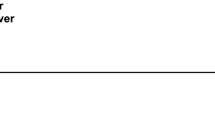Riassunto
Si studia lo scattering di due fermioni come processo del second’ordine dell’interazione diretta tra campi spinoriali nell’ambito di una teoria non locale covariante. Con opportuna scelta del fattore di forma si possono ricavare elementi di matrice caratteristici di interazioni sia a corto che a lungo raggio d’azione. Si applicano i risultati al calcolo della sezione d’urto elettrone-neutrino.
Summary
The scattering of two Fermi-particles, as a second-order process of the direct interaction between spinor fields, is studied in the frame of a covariant non local theory. From the second-orderS matrix (2) the matrix element of the graph of fig. 1 is calculated: forms (12) and (13) (details of calculation are in appendix). It is shown. that if one chooses, the form (17), with (18) for the form factor, one obtains a matrix element (21) which is characteristic of short range forces; with the choice (23) one obtains the matrix element (25), characteristic of long range forces. This is largely independent from the particular choice (17) of the Fourier transform of the form factor and from the non localisability regionm which determines, in the case of long range forces, the fine structure constant of the correspondent long range interaction (form (27)). As numerical example the results are applied to the calculation of the elastic scattering cross-section neutrino-electron. With the choice (18) the cross-section for relativistic energies is given by (29); (31) is the cross-section which would be obtained with a non relativistic cut-off technique (Fermi). Much higher values are obtained for the crosssections with the choice (23) : the ratio of the cross-sections electron-electron (Möller) and neutrino-electron would in this case be given by (33).
Similar content being viewed by others
References
P. Budini eC. Villi:Nuovo Cimento,10, 1172 (1953).
W. Pauli eF. Villars:Rev. Mod. Phys.,21, 434 (1949).
F. I. Dyson:Phys. Rev.,75, 1736 (1949).
E. Fermi eC. N. Yang:Phys. Rev.,76, 1739 (1949).
M. Chrétien eR. E. Peierls:Nuovo Cimento,10, 669 (1949).
R. P. Feynman:Phys. Rev.,76, 769 (1949).
E. Fermi:Particelle elementari (Torino, 1953).
N. F. Mott eH. S. W. Massey:The theory of atomic Collision (Oxford, 1949), p. 368.
F. Reines eC. L. Corvan:Phys. Rev.,90, 492 (1953).
AV. Pauli:Nuovo Cimento,10, 648 (1953).
F. I. Dyson:Lecture Course (Cornell, 1951), p.92.
Author information
Authors and Affiliations
Rights and permissions
About this article
Cite this article
Budini, P. Processi del second’ordine dell’interazione alla fermi. Nuovo Cim 10, 1299–1310 (1953). https://doi.org/10.1007/BF02773119
Received:
Published:
Issue Date:
DOI: https://doi.org/10.1007/BF02773119




